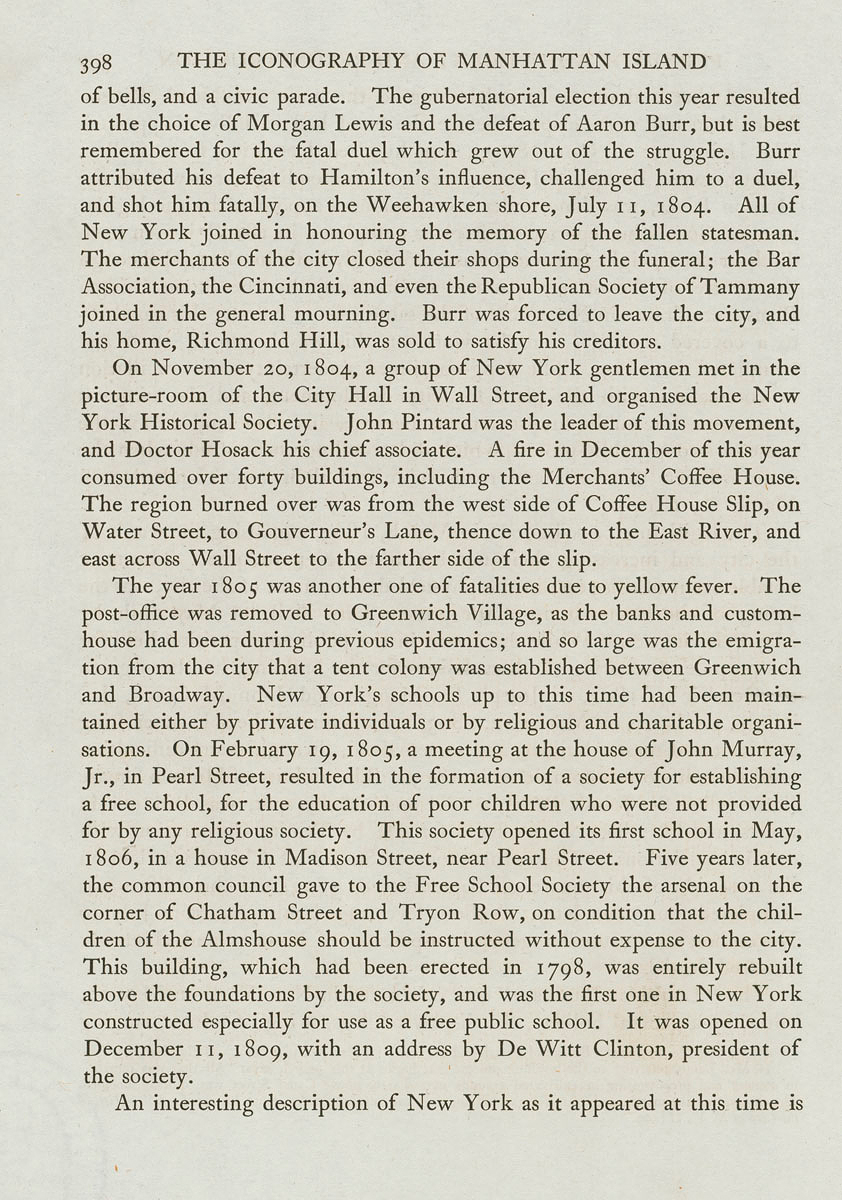398 THE ICONOGRAPHY OF MANHATTAN ISLAND
of bells, and a civic parade. The gubernatorial election this year resulted
in the choice of Morgan Lewis and the defeat of Aaron Burr, but is best
remembered for the fatal duel which grew out of the struggle. Burr
attributed his defeat to Hamilton's influence, challenged him to a duel,
and shot him fatally, on the Weehawken shore, July 11, 1804. All of
New York joined in honouring the memory of the fallen statesman.
The merchants of the city closed their shops during the funeral; the Bar
Association, the Cincinnati, and even the Republican Society of Tammany
joined in the general mourning. Burr was forced to leave the city, and
his home, Richmond Hill, was sold to satisfy his creditors.
On November 20, 1804, a group of New York gentlemen met in the
picture-room of the City Hall in Wall Street, and organised the New
York Historical Society. John Pintard was the leader of this movement,
and Doctor Hosack his chief associate. A fire in December of this year
consumed over forty buildings, including the Merchants' Coffee House.
The region burned over was from the west side of Coffee House Slip, on
Water Street, to Gouverneur's Lane, thence down to the East River, and
east across Wall Street to the farther side of the slip.
The year 1805 was another one of fatalities due to yellow fever. The
post-office was removed to Greenwich Village, as the banks and custom¬
house had been during previous epidemics; and so large was the emigra¬
tion from the city that a tent colony was established between Greenwich
and Broadway. New York's schools up to this time had been main¬
tained either by private individuals or by religious and charitable organi¬
sations. On February 19, 1805, a meeting at the house of John Murray,
Jr., in Pearl Street, resulted in the formation of a society for establishing
a free school, for the education of poor children who were not provided
for by any religious society. This society opened its first school in May,
1806, in a house in Madison Street, near Pearl Street. Five years later,
the common council gave to the Free School Society the arsenal on the
corner of Chatham Street and Tryon Row, on condition that the chil¬
dren of the Almshouse should be instructed without expense to the city.
This building, which had been erected in 1798, was entirely rebuilt
above the foundations by the society, and was the first one in New York
constructed especially for use as a free public school. It was opened on
December 11, 1809, with an address by De Witt Clinton, president of
the society.
An interesting description of New York as it appeared at this time is
|








